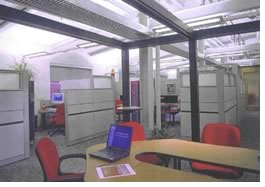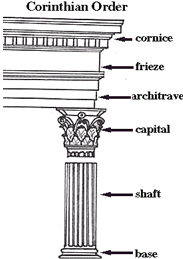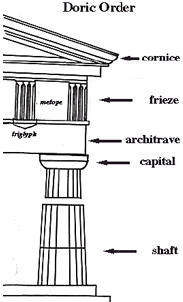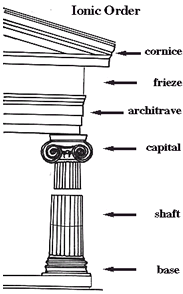
Interdisciplinary study will match environmental factors with physiological responses in the workplace
by John P. Eberhard, FAIA
To date, neuroscience research has tended to be oriented towards illnesses of the brain and the mind. This is a natural inclination for those scientists who work in government labs—like the National Institutes of Health (NIH) or the National Institute of Mental Health (NIMH)—whose support comes from government programs. Funding is much more likely to be approved by Congress if the research promises a cure for a disease or the prevention of health problems in the future.
 Architects,
however, would see alternative uses for neuroscience study, such as how
the mind processes information about architecture-related experience.
The AIA should be celebrating the experiences that people can have in
buildings that are functional, strong, and delightful (to hark back to
Vitruvius). The profession has a knowledge base well tuned to "function,"
and to "strong," through its various guidelines for design and
structural knowledge built on the science of physics.
Architects,
however, would see alternative uses for neuroscience study, such as how
the mind processes information about architecture-related experience.
The AIA should be celebrating the experiences that people can have in
buildings that are functional, strong, and delightful (to hark back to
Vitruvius). The profession has a knowledge base well tuned to "function,"
and to "strong," through its various guidelines for design and
structural knowledge built on the science of physics.
 "Delight,"
however, has been elusive. For most of history, beauty was understood
to be related to buildings whose designs were well proportioned and harmonious
within the discipline of historical styles, such as the classical orders.
In the early 20th century, architecture was "freed" from the
discipline of historical styles, and the concept of beauty in architecture
(and the consequent delight of the users) has become an acquired taste.
However, there is a fundamental response of the mind to many attributes
of design that is more dominant than the ephemeral concepts of taste.
"Delight,"
however, has been elusive. For most of history, beauty was understood
to be related to buildings whose designs were well proportioned and harmonious
within the discipline of historical styles, such as the classical orders.
In the early 20th century, architecture was "freed" from the
discipline of historical styles, and the concept of beauty in architecture
(and the consequent delight of the users) has become an acquired taste.
However, there is a fundamental response of the mind to many attributes
of design that is more dominant than the ephemeral concepts of taste.
Neuroscience may
help explain response to architecture
Neuroscience holds the promise of developing a knowledge base of how the
human brain/mind responds to the underlying attributes of architecture.
Not only how we respond, but also why we do so. For example, neuroscience
has shown that vision is a process using six different areas of the cortex,
the hippocampus, the thalamus, and the cones and rods of the retina. We
use this visual apparatus to gain knowledge of the world in an active
way—it is not a passive process of images entering the mind. How we use
vision to become aware of our surroundings, then pay attention to the
details of what is within our range of sight, and then recognize (and
understand) what we are seeing is remarkable. Even more remarkable is
why we recognize anything at all, and why what we do recognize includes
an emotional response.
 The
interdisciplinary study
The
interdisciplinary study
As you read this, an interdisciplinary team of researchers is working
to evaluate physiological and cognitive responses in a controlled work
environment. Their scientific studies will address how certain attributes
of the workplace impact creativity, productivity, and well-being.
The project aims to develop a series of cognitive
activities and associated neurochemical, neuro-hormonal, and immune markers
as predictors of stress or productivity in everyday office settings. The
current study brings together a diverse, multidisciplinary group that
includes the American Institute of Architects Office of Research Planning
(AIA) and a number of government agencies. For example:
Researchers from The Integrative Neural Immune Program of NIMH and the
National Institute on Aging (NIA) will identify the effects of physical
variables, including air flow, acoustics, temperature, light, and crowding
on people's cognitive abilities. INIP will coordinate efforts to develop
and validate sample collection and recovery technology and measure microquantities
of hormones and immune molecules in sweat and other body fluids, design
clinical assessment and psychological questionnaires with NIA investigators,
develop and implement tests of cognitive activities, and collect physiological
readouts with NIA researchers.
 Offices
provide an environment where workers perform cognitive functions to produce
a variety of results. Physiological responses of the central nervous,
endocrine, and immune systems are involved in accomplishing these cognitive,
creative, and interactive tasks. Scientific knowledge of such functions
will help organizational leaders and their professional designers to better
understand appropriate criteria for office design that will increase workers'
creativity, productivity, health, and well-being.
Offices
provide an environment where workers perform cognitive functions to produce
a variety of results. Physiological responses of the central nervous,
endocrine, and immune systems are involved in accomplishing these cognitive,
creative, and interactive tasks. Scientific knowledge of such functions
will help organizational leaders and their professional designers to better
understand appropriate criteria for office design that will increase workers'
creativity, productivity, health, and well-being.
If we in the AIA address the "celebration" of human experiences in architectural settings, we will likely help set a new course for neuroscience studies of the positive aspects of how and why our brains support the processes of our minds. The positive aspects would likely include the contribution of certain colors to patient recovery in hospital settings, response of children to acoustic conditions below threshold levels in classrooms, contribution of sunlight to the well-being of nursing home inhabitants, and impact of windows with a view on worker productivity in the office setting. While most of these positive responses are intuitively obvious, neuroscience can now provide "hard" evidence of how these experiences are formed in the brain and why our minds perceive them as positive.
Copyright 2002 The American Institute of Architects. All rights reserved.
![]()
|
Graphics from the Charotte-Mecklenberg Historical Landmarks Commission. |
|